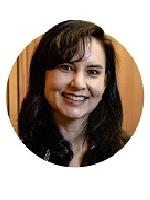


The purpose of this presentation is for educators to increase their computer science skills and confidence by learning how to use free web-based tools for their classrooms and seeing how other educators implement them in a variety of education settings.
Participants will be able to:
-Program inputs (temperature sensor, buttons, microphone, compass, radio) and outputs (LEDs and speaker) on a physical computing device
-Code a physical computing tool to log data for visualization and interpretation.
-Integrate physical computing into computer science and interdisciplinary courses.
Note on accessibility: These learning resources can be adapted with Microsoft Immersive Reader (free accessibility tool integrated into tutorials) to help students who are blind and low vision utilize these tools. Each of these resources are translated into between six and thirty-two languages.
Example activities:
1) Tutorials https://microbit.org/projects/make-it-code-it/
2) Tutorials https://makecode.microbit.org/
3) Lesson plans https://microbit.org/lessons/
4) Design challenges https://microbit.org/projects/do-your-bit/
We will use exemplars (by permission) from educators and students around the world.
Example: https://microbit.org/news/2021-09-27/students-invent-asthma-prevention-idea/
10 min - Introductions of presenters and attendees. Share why you came today.
15 min - Participants each code a musical name badge (hands on, everyone makes something)
15 min - Participants create a dog-bark counter (or some other data logging device) - (hands on, everyone makes something)
10 min - Participants review and explore accessibility features of Make code.
15 minutes - Participants review and explore advanced programming techniques and Github integrations
All remaining time: teaching with the micro:bit: hear from expert practitioners through video clips, photos, and lesson plans, participants share their own experiences for discussion and feedback. Q and A.
aka.ms/MakeCodeResearch
aka.ms/PhysicalComp
https://microbit.org/impact/research/